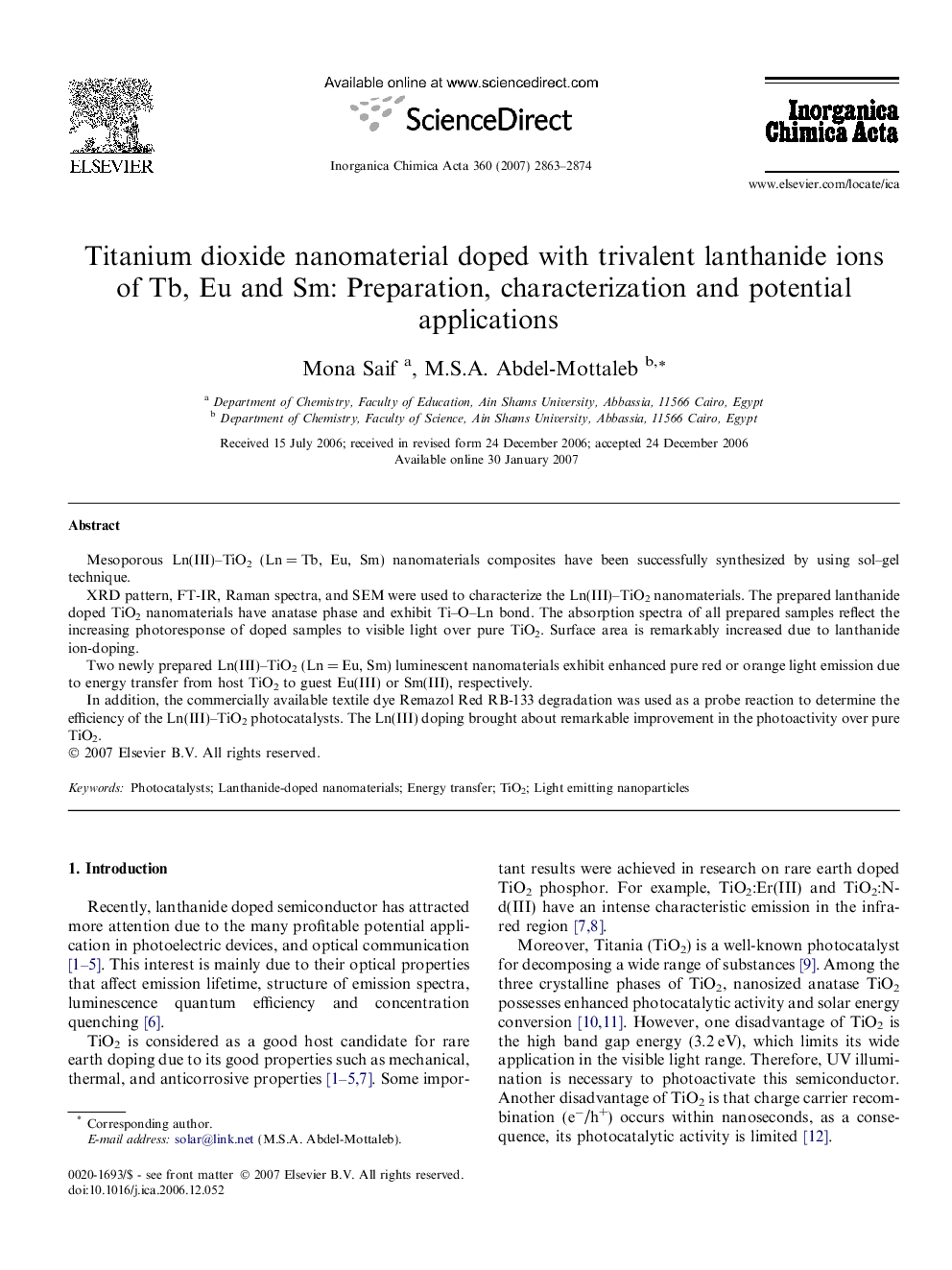| کد مقاله | کد نشریه | سال انتشار | مقاله انگلیسی | نسخه تمام متن |
|---|---|---|---|---|
| 1311617 | 975339 | 2007 | 12 صفحه PDF | دانلود رایگان |

Mesoporous Ln(III)–TiO2 (Ln = Tb, Eu, Sm) nanomaterials composites have been successfully synthesized by using sol–gel technique.XRD pattern, FT-IR, Raman spectra, and SEM were used to characterize the Ln(III)–TiO2 nanomaterials. The prepared lanthanide doped TiO2 nanomaterials have anatase phase and exhibit Ti–O–Ln bond. The absorption spectra of all prepared samples reflect the increasing photoresponse of doped samples to visible light over pure TiO2. Surface area is remarkably increased due to lanthanide ion-doping.Two newly prepared Ln(III)–TiO2 (Ln = Eu, Sm) luminescent nanomaterials exhibit enhanced pure red or orange light emission due to energy transfer from host TiO2 to guest Eu(III) or Sm(III), respectively.In addition, the commercially available textile dye Remazol Red RB-133 degradation was used as a probe reaction to determine the efficiency of the Ln(III)–TiO2 photocatalysts. The Ln(III) doping brought about remarkable improvement in the photoactivity over pure TiO2.
Mesoporous Ln(III)–TiO2 (Ln = Tb, Eu, Sm) nanomaterials composites have been successfully synthesized and characterized. The absorption spectra reflect the increasing photoresponse of doped samples to visible light over pure TiO2. Surface area is remarkably increased due to lanthanide ion-doping. In this paper, we report on the properties of this new class of nanomaterials in view of their possible profitable applications in light-emitting devices and photocatalysis.Figure optionsDownload as PowerPoint slide
Journal: Inorganica Chimica Acta - Volume 360, Issue 9, 10 June 2007, Pages 2863–2874